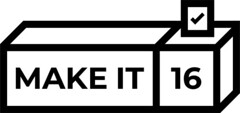Back in April, Stuff was leaked a consultation copy of a cabinet paper on changes to proactive release policy. The full paper - The next steps in the public release of official information - was eventually released, but in the interim I filed an OIA request seeking information on the paper and the consultations which informed its development. Given that proactive publication had featured heavily in past Open Government Partnership "consultations" (just look at how often it comes up in the 2018 ideas list), I was particularly interested in learning whether they had bothered to discuss it with OGP stakeholders, or their handpicked Expert Advisory Panel. I got the response back yesterday, with several hundred pages of emails. The summary:
- There was no consultation with OGP stakeholders. Which just strengthens the perception that the government's "engagement" and "co-design" over the OGP is a box-ticking exercise which goes nowhere, and that they think "open government" is something they do to us, rather than with us. It also makes it clear that the Public Service Act's statutory obligation to "foster a culture of open government" means precisely nothing in practice.
- We were meant to have proper statistics: when the full cabinet paper was released, I commented on how the reporting regime for proactively released cabinet papers was broken, reporting only on numbers released, without providing the number lodged as a point of comparison. However, the original draft - then titled Progressing our commitment to open government - included proper reporting:
This data would be supplemented with information from the Cabinet Office on the number of papers lodged during the same reference period and reported by the Commission to the Minister for the Public Service. I would expect to release the information. Because of the time lag between the lodging, consideration of papers and their publication, the two sets of data would not be directly comparable but would give an indication of the proportion of papers being released, and trends in the numbers made publicly available.
This provision was removed in late April, apparently at the behest of one of Hipkins' ministerial advisors (a political appointee, not a public servant), who was "not sure how useful" it was for Cabinet Office to provide a denominator against which performance could be assessed. The decision was made in the wake of an embarrassing series of written parliamentary questions which revealed that the government was failing to meet its existing proactive release obligations, but I'm sure that had nothing to do with it... - Hipkins pushed for real change, but shot himself in the foot: In July 2021 the paper was rewritten by Hipkins and David Choat, his ministerial adviser. The second draft included some changes - most notably, a proposal for a central portal for proactive release of Cabinet material:
I also recommend the Cabinet Office be tasked with creating a single portal for the publication of all proactively released Cabinet papers. Where supporting material is released on department or agency websites, links should also be provided to that information.
This idea has been floating round in NZ open government circles for years, and would be a game changer for transparency. In consultation, other agencies loved it, and I think the public would too. DPMC, OTOH, hated the idea. Their feedback is a masterpiece of bureaucratic obstructionism, going from "we don't need this anyway" through "if we do need it, its not our responsibility" through "if it is our responsibility, then we would need a lot of money", before settling on "if you want it, you can do it". But its clear that they are hostile to the idea of being involved in releasing information, saying "The role of the Cabinet Office is to support executive decision-making... it is not our role to disclose Cabinet material... it is also not the role of Cabinet Office to assess what should be released or to make redactions". [This is clearly legally wrong. Cabinet material is official information, which they hold, so it is absolutely their job to disclose it, to assess what should be released and make redactions if necessary].It would be easy to conclude from this that DPMC hates transparency, and they do (just look at their response to requests for cabinet agendas). But there's another reason for their hostility to the idea, and that is that they simply weren't consulted about it. This is clear from an email between TKM/PSC policy analysts a week before the draft went out, in which they disclaim all responsibility for that bit. Whoops. You might think though that a minister with responsibility for open government might be able to make decisions and direct public resources to implement them. But apparently, they can't.
- The government wanted to give impunity to Paula Bennett, again: Huge chunks of the early drafts are redacted as "confidential advice". But an unredacted header gives the subject as "Exploring changes to the OIA to facilitate proactive release", while an unredacted footnote shows that at least one of these changes relates to section 48 of the OIA: the immunity clause. This has been a long-standing fetish of the public service, and in recent years they've tried to divert every move to amend or reform the OIA to include extending s48 to cover proactive release (and their arses). The reason we shouldn't do it can be summed up in two words: Paula Bennett. Because immunity for proactive release means impunity for Ministerial doxxing, and that's something most kiwis would find absolutely unacceptable. Fortunately this attempt seems to have been killed at the final hurdle, and it was removed in rewrites in late April. But given the desire of bureaucrats to cover their arses regardless of consequences, no doubt it'll be back.
- The SIS views transparency as a security threat: Yes, really. In their feedback they express concerns about the "mosaic effect", "when multiple agencies release single pieces of information which, on their own, are innocuous, but when viewed together could amount to information that is harmful to New Zealand or its interests". A large amount is redacted, but according to a later summary they are concerned about ineligible people reading proactive releases. Which sounds like another good reason to get rid of the OIA's outdated eligibility clause, and align it with the more modern LGOIMA. It also makes you wonder what they think of FYI...
Update: The SIS's email has now been released, unredacted, and is a naked attempt to weaponise OIA eligibility requirements to undermine proactive release.



